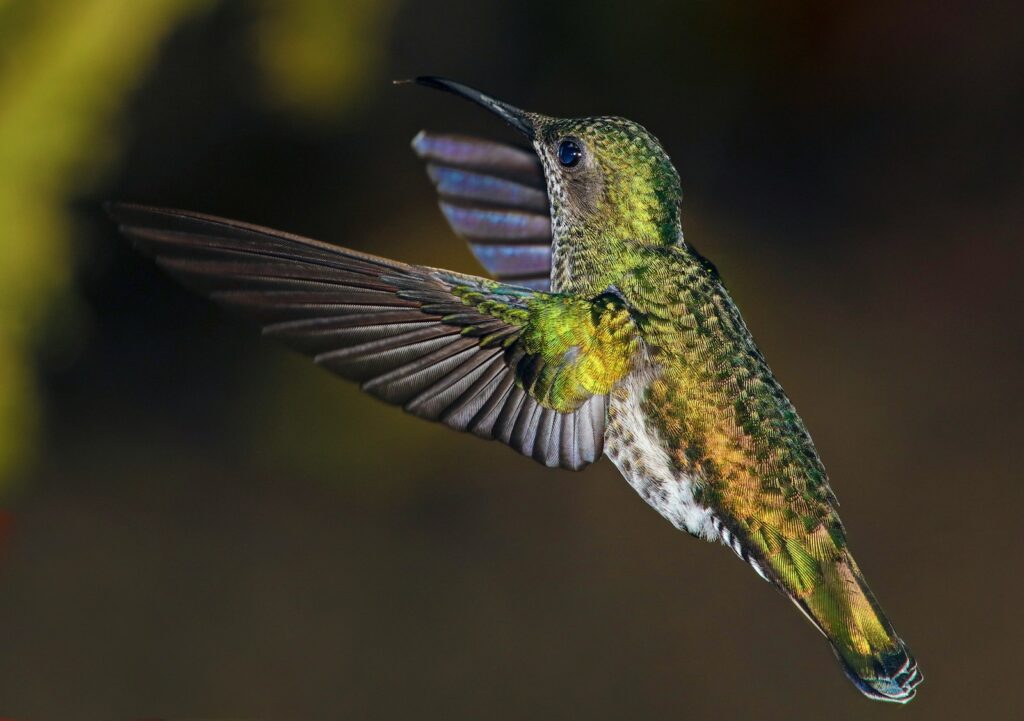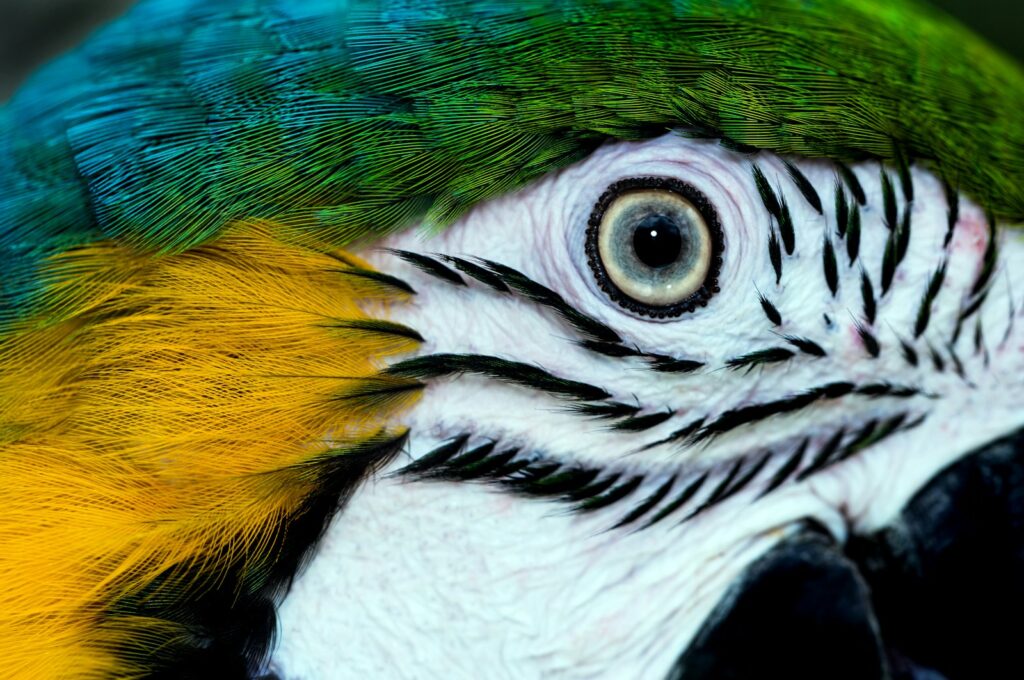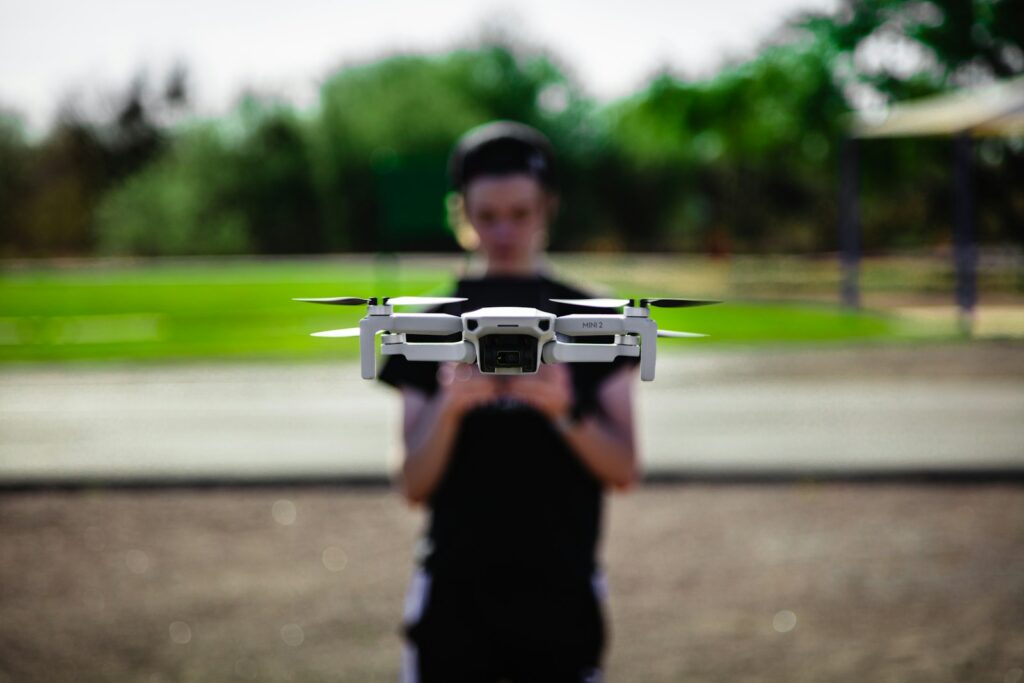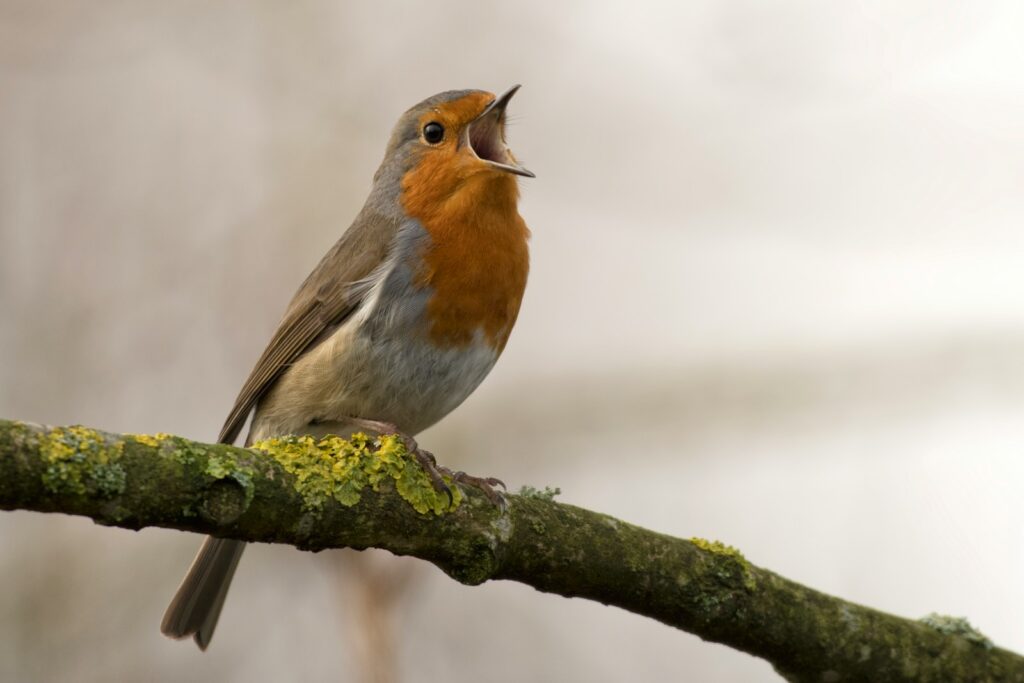In the vast theatre of animal navigation, one performer stands out for its extraordinary ability to sense Earth’s magnetic field with remarkable precision. The European robin and several other migratory bird species possess what scientists have called a “built-in compass” – an innate ability to detect and navigate using the planet’s magnetic field.
This biological marvel enables these feathered navigators to undertake journeys spanning thousands of miles, often returning to the same locations year after year with astonishing accuracy.
Their navigation system works regardless of weather conditions, time of day, or geographic displacement, making it one of nature’s most fascinating adaptations. Let’s explore how these remarkable birds always know which way is north, even when all other directional clues are absent.
The Mystery of Avian Navigation

Humans have been fascinated by birds’ uncanny ability to navigate vast distances without maps or instruments for centuries. Early seafarers often carried caged birds on voyages, releasing them when lost to follow their flight direction toward land.
Scientists began a serious study of this phenomenon in the 1950s, when they noticed that even caged migratory birds would become restless and attempt to move in the direction of their natural migration routes during migration seasons.
This behaviour, called “migratory restlessness” or Zugunruhe, occurs even when the birds have no visual cues about direction, suggesting an internal compass at work. These early observations launched decades of research that gradually revealed complex navigation systems that birds employ, with the magnetic compass being perhaps the most remarkable component.
The European Robin: Nature’s Premier Navigator

The European robin (Erithacus rubecula) has become the poster child for avian magnetic navigation because of its well-studied abilities. These small, orange-breasted birds undertake seasonal migrations between Northern Europe and North Africa, accurately navigating thousands of miles each way.
What makes the European robin particularly special is its demonstrated ability to detect not only the direction of the magnetic field but also its inclination angle – the angle at which the field lines intersect Earth’s surface.
This gives the robin a complete three-dimensional understanding of its position relative to its destination. In laboratory experiments, when researchers artificially manipulated the magnetic field around captive robins, the birds adjusted their orientation accordingly, proving that they used magnetic cues for navigation rather than visual landmarks or celestial cues.
The Quantum Mechanics of Bird Navigation

The European robin’s magnetic sense relies on truly extraordinary quantum mechanical processes occurring in its eyes. Scientists have identified special photoreceptor cells containing a protein called cryptochrome, which undergoes quantum entanglement when exposed to blue light.
When blue light strikes these cryptochromes, it creates what physicists call “radical pairs” – pairs of molecules with unpaired electrons whose spins are quantum entangled. The alignment of Earth’s magnetic field influences the spin states of these electrons, creating detectable signals that the bird’s brain interprets as directional information.
This quantum biological process is astonishingly sensitive, allowing birds to detect tiny variations in the magnetic field. What makes this even more remarkable is that these quantum effects occur in living tissue at body temperature, while most human-made quantum devices require temperatures near absolute zero to function.
The Eye as a Magnetic Receptor

Unlike humans, who have developed external compasses to detect magnetic north, birds have this ability integrated directly into their visual system. The cryptochrome proteins mentioned earlier are located primarily in the birds’ retinas, specifically in specialized neurons that form part of their visual processing system.
This location is not coincidental – it allows birds to literally “see” the magnetic field as a visual pattern superimposed on their normal vision. Scientists believe this may appear to the birds as a pattern of light and dark, or perhaps colors, that shifts as they change direction relative to Earth’s magnetic field.
When researchers covered birds’ eyes or exposed them to certain wavelengths of light that affect cryptochrome activity, their magnetic orientation abilities were disrupted, confirming the critical role of vision in magnetic sensing.
Magnetite: Nature’s Microscopic Compass Needles

In addition to the cryptochrome-based quantum compass in their eyes, many birds also possess a second, complementary magnetic sensing system based on tiny particles of magnetite in their beaks and inner ears.
Magnetite (Fe3O4) is a naturally magnetic iron oxide that aligns with Earth’s magnetic field like a compass needle. Scientists have discovered clusters of these microscopic particles connected to nerve endings in birds’ upper beaks and ear structures.
These magnetite-based receptors appear to provide information about the strength of the magnetic field rather than just its direction, potentially giving birds information about their latitude.
This dual system of quantum-based direction sensing and magnetite-based intensity detection provides birds with a comprehensive navigation toolkit that surpasses even our most sophisticated human navigational technologies in many respects.
Calibrating the Internal Compass

A bird’s magnetic compass isn’t simply an innate, fully-formed system but requires calibration during development and throughout the bird’s life. Young birds appear to learn and calibrate their magnetic compass by observing other directional cues like the sun and stars.
During twilight hours, birds observe the pattern of polarized light in the sky (invisible to humans without special filters) and use this to calibrate their magnetic compass. This calibration is crucial because Earth’s magnetic field isn’t static – it slowly shifts over time and can vary due to local geological features.
Research has shown that if birds are exposed to artificially shifted magnetic fields at sunset, they will recalibrate their internal compass to this new reference, demonstrating how flexible and adaptable this system is. This calibration process continues throughout their lives, keeping their navigation system accurate despite environmental changes.
Migration Without Visual Cues

One of the most compelling proofs of birds’ magnetic compass abilities comes from their capacity to navigate accurately even when deprived of visual cues. Birds successfully migrate on overcast nights when stars are invisible and can maintain their course during foggy or rainy conditions that would leave human navigators completely disoriented.
In scientific experiments, birds placed in completely enclosed, featureless environments still oriented themselves in the appropriate migratory direction as long as they could sense the ambient magnetic field.
When researchers placed birds in artificial magnetic fields that were rotated from true north, the birds adjusted their orientation accordingly, even without being able to see outside their enclosures. This remarkable ability explains how birds like the Arctic tern can navigate across featureless oceans and why foggy conditions don’t disrupt bird migrations the way they might ground human aircraft.
Beyond Direction: Mapping and Positional Awareness

The avian magnetic sense goes beyond merely indicating north; it appears to function as part of a sophisticated internal mapping system. Scientists believe that birds combine magnetic information with other environmental cues to create detailed mental maps of their surroundings and migration routes.
Some bird species seem capable of detecting subtle variations in the Earth’s magnetic field that create a kind of topographic map they can follow. These variations, caused by geological features like iron deposits or underground structures, may serve as magnetic landmarks for navigating birds.
There’s evidence that birds imprint on the specific magnetic signature of their birthplace, which helps explain their remarkable ability to return to the same nesting sites year after year. This complex positional awareness system allows birds not only to know which direction is north but also to recognize their precise location on the planet.
Weather Effects on Magnetic Navigation

While birds’ magnetic navigation is remarkably robust, it can be affected by certain extreme weather conditions and solar phenomena. Solar storms and geomagnetic disturbances temporarily alter Earth’s magnetic field, potentially confusing migrating birds and leading to navigation errors.
Researchers have documented cases where large numbers of migratory birds appeared disoriented or veered off course during major solar events that created magnetic anomalies.
Thunderstorms present another challenge, as the strong electromagnetic fields generated by lightning can temporarily disrupt birds’ magnetic sensing abilities. Birds appear to have adapted to these challenges by using multiple navigation systems as backups – when magnetic navigation becomes unreliable, they can switch to visual navigation using landmarks, celestial cues, or even scent maps.
This redundancy in navigation systems demonstrates the evolutionary importance of accurate migration for bird survival.
Other Animals with Magnetic Senses

Birds aren’t the only creatures with magnetic sensing abilities, though they have evolved perhaps the most sophisticated versions of this sense. Sea turtles use magnetic detection to navigate across thousands of miles of open ocean, returning to specific beaches to lay their eggs.
Certain fish species, particularly salmon, appear to imprint on the magnetic signature of their natal streams and use this information to return for spawning. Even some mammals show evidence of magnetoreception – research suggests that dogs prefer to align themselves along north-south axes when defecating, and certain species of bats use magnetic cues during migration.
Among invertebrates, honeybees have demonstrated magnetic sensitivity that helps them navigate between the hive and food sources. However, birds remain the champions of magnetic navigation, with their dual quantum and magnetite-based systems offering precision and reliability unmatched in the animal kingdom.
Human Applications of Avian Navigation

The study of birds’ magnetic navigation capabilities has inspired several human technological developments and research directions. Engineers working on autonomous navigation systems for drones and robots have looked to bird navigation for bio-inspiration, attempting to create more efficient and resilient positioning systems that don’t rely exclusively on GPS.
Medical researchers are investigating whether understanding the quantum biology of cryptochrome might lead to treatments for conditions related to disrupted circadian rhythms, as these same proteins play roles in regulating biological clocks.
Materials scientists have studied the structure of biogenic magnetite in birds to develop more sensitive magnetic sensors for electronic devices. Perhaps most intriguingly, the quantum coherence demonstrated in bird navigation has provided valuable insights for quantum computing researchers, who typically struggle to maintain quantum states at warm temperatures.
Birds accomplish what our best laboratories find challenging, maintaining quantum coherence in warm, wet biological tissues.
Threats to Magnetic Navigation

Human activities have created new challenges for birds’ navigation systems in the modern world. Urban environments with electromagnetic noise from power lines, cell towers, and wireless networks can potentially interfere with birds’ ability to detect Earth’s relatively weak magnetic field.
Light pollution disrupts the celestial cues birds use to calibrate their magnetic compass during twilight hours, potentially leading to navigation errors. Climate change poses another threat, as shifting magnetic poles and changing patterns of the Earth’s magnetic field could misalign with birds’ inherited migration programs.
Metal structures in cities can create local magnetic anomalies that confuse migrating birds, contributing to the millions of bird deaths caused annually by building collisions.
Conservation efforts increasingly consider these electromagnetic aspects of habitat, with some areas implementing “dark sky” policies during migration seasons to help birds maintain their natural navigation abilities.
The Evolutionary Marvel of Magnetic Navigation

The evolution of magnetic sensing in birds represents one of nature’s most sophisticated adaptations, developing over millions of years to enable the remarkable migratory feats we observe today.
The ability to detect Earth’s magnetic field likely evolved as a simple directional sense that helped ancestral birds orient themselves during local movements. Over time, natural selection favored individuals with increasingly precise navigation abilities, as accurate migration meant reaching suitable habitats with reliable food sources.
The dual system of quantum-based and magnetite-based sensing probably evolved separately and later became integrated, providing redundancy and enhanced precision. What makes this evolutionary story fascinating is that birds developed the ability to sense a force that humans cannot naturally detect, reminding us that different species experience the world in fundamentally different ways.
The fact that this navigation system relies on quantum mechanical processes – physics that humans only discovered in the 20th century – highlights how evolution can produce solutions of astonishing sophistication.
Conclusion

The European robin and other magnetically sensitive birds represent one of nature’s most extraordinary feats of biological engineering. Their built-in compass, combining quantum processes in the eye with magnetite receptors in the beak and ears, allows for navigation precision that humans could only achieve with advanced technology.
This remarkable ability enables epic migrations across continents and oceans, often returning to the same locations year after year. As scientists continue to unravel the mysteries of avian navigation, we gain not just knowledge about these remarkable creatures but also inspiration for new technologies and a deeper appreciation for the wonders of evolution.
The bird with a built-in compass reminds us that we share our planet with beings who experience aspects of reality that remain invisible to us without our technological aids – a humbling and awe-inspiring realization about the diverse ways life has adapted to perceive and navigate our world.
